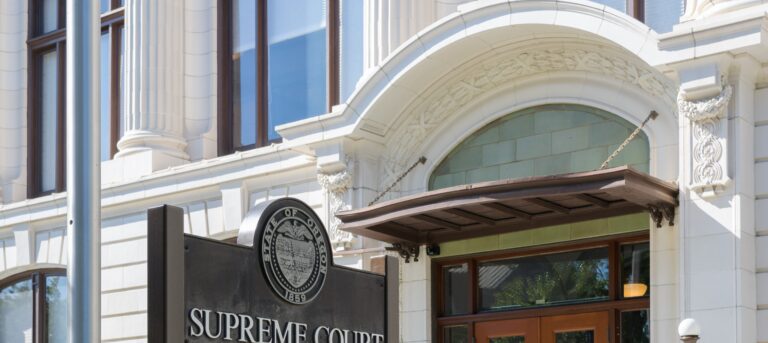Washington Case Law Update: Manufacturer Has Duty to Warn If Product Required Use of Hazardous Component
Washington Case Law Update: Manufacturer Has Duty to Warn If Product Required Use of Hazardous Component
From the desk of Kyle Riley: Generally, a manufacturer does not have a duty to warn of risks posed by a product that the manufacturer did not itself manufacture or distribute. But where the product either required incorporated hazardous components manufactured by others at the time it was supplied or required the use of hazardous components to function, does the manufacturer have a duty to warn?
Claims Pointer: In this case arising out of a former Navy engineer’s death from alleged asbestos exposure, the Washington Court of Appeals held that summary judgment in favor of the manufacturer was inappropriate where the steam turbines at issue were shipped with asbestos-containing components and required asbestos-containing component parts to operate. The case establishes an exception to the general rule that a manufacturer has no duty to warn of risks posed by a product that the manufacturer did not manufacture or distribute. The case is an important warning to manufacturers and insurers that summary judgment is not available where a hazardous component part was shipped with the product or required for the product to function as intended.
Yuen Wing Woo (“Woo”), a former United States Navy engineer, worked around steam turbines on several different ships in the 1940s and 50s. General Electric (“GE”) designed, manufactured, and supplied the steam turbines aboard those same ships. Those steam turbines required the use of thermal heat insulation, gaskets, and packing to properly function, and at the time, only asbestos-containing insulation, gaskets, and packing were available. In 2009, Woo died of mesothelioma, and the personal representative of his Estate and his surviving spouse (collectively, “the Estate”), filed a wrongful death and personal injury lawsuit against GE.
GE moved for summary judgment on the ground that there was no evidence GE supplied or installed asbestos-containing products used in conjunction with the steam turbines on the ships on which Woo worked. GE effectively admitted that the original components were asbestos-containing products but presented evidence that those components would have been replaced with other components during the time in which Woo worked on the ships. GE argued that it did not have a duty to warn about the hazards of asbestos-containing products it did not manufacture, sell, or supply. A former GE engineer testified that standard practice was that the shipyard would provide the insulation for the steam turbine, and that maintaining the steam turbines did not require opening the steam turbines or removing the insulation.
The Estate argued that GE had a duty to warn about the hazards of the asbestos-containing products that were required to be used with the steam turbines. The Estate presented evidence that GE knew that only asbestos-containing thermal insulations, gaskets, and packaging were available in the 1940s and 50s and that they were necessary for the proper functioning of the steam turbines, and that GE supplied the original asbestos-containing packing and gaskets. Among the documents the Estate relied on was a “Technical Information Letter” (“TIL”) GE issued in 1989, which discussed asbestos-containing materials in steam turbine-generators. The TIL indicated that only asbestos-containing materials were previously available, and that asbestos-free materials had become commercially available. The TIL also indicated that heat retention insulation for new GE steam turbines was usually purchased and field installed by GE to functional factory specifications.
The Estate also presented testimony of a former marine engineer who worked on similar ships. The engineer testified that typically, GE provided extra sets of specially precut asbestos-containing gaskets with new turbines. He also testified that regular maintenance of the interior blades of the steam turbines could not be performed without dismantling the turbine, which in turn required removal of the asbestos insulation covering the top half of the turbine. Moreover, the engineer testified that there was no way that asbestos insulation, gaskets, packing, and piping could be removed from a steam turbine without creating asbestos dust.
The evidence in this case showed that asbestos-containing insulation, gaskets, and packing products were necessary for the steam turbines to function as designed. Moreover, there was a reasonable inference from the evidence that GE knew that only asbestos-containing insulation, packing, and gaskets were available in the 1940s and 50s, and therefore only asbestos containing products could be used with the steam turbines. And because service records established that Woo worked aboard the ships while the asbestos-containing products were in place, there was a reasonable inference that he was exposed to the original asbestos packing and gaskets that GE supplied. Summary judgment was therefore inappropriate, and the case was remanded to the trial court for further proceedings.
View full opinion at: https://www.courts.wa.gov/opinions/pdf/744585.pdf
Case updates are intended to inform our clients and others about legal matters of current interest. They are not intended as legal advice. Readers should not act upon the information contained in this article without seeking professional counsel.
To email Kyle Riley, please click here.
To view the most recent Oregon Case Law Update:Contextually Ambiguous Liability Waiver Does Not Limit Tort Liability, please click here.

















